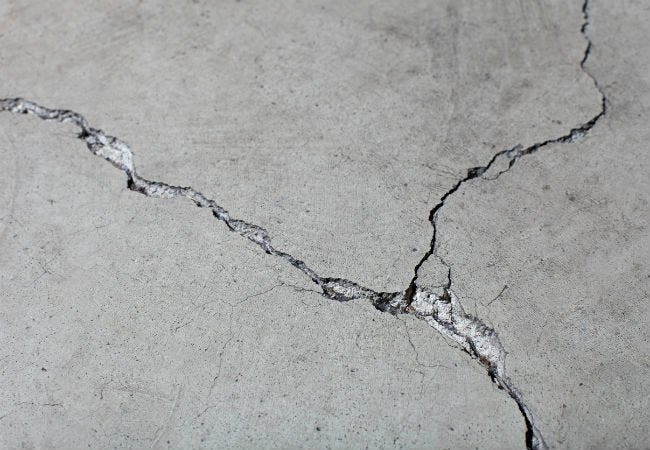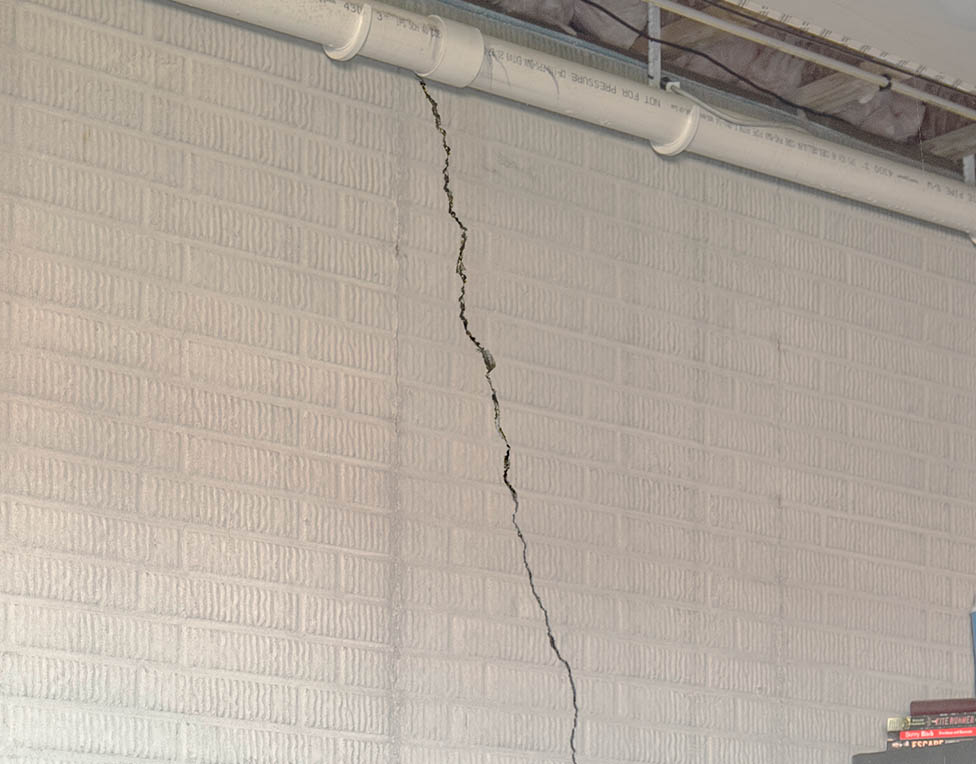So, your brother-in-law comes by to look at your leaky basement and points out that the water appears to be seeping out of a number of cracks in your basement floor. He says you should have the cracks injected because that’s what he had done to cracks in his basement wall and they stopped leaking.
So you call in the basement waterproofing company and, after their guy explains what makes floor cracks seep water, he shocks you by telling you that, despite your all-knowing brother-in-law’s advice, injection won’t fix the seeping basement floor cracks.
Why Urethane Injection is the Wrong Repair for Cracks in Basement Floors

Basement waterproofing companies inject wall cracks in poured concrete foundations all the time. It’s an extremely effective remedy and can be done quickly at a reasonable cost. It’s a great, permanent repair for non-structural wall cracks. For floor cracks? Not so much. Here’s why.
The Basement Collection is a compilation of 9 award winning indie games by Edmund McMillen, creator of Super Meat Boy and The Binding of Isaac. All of the games featured in the collection have been revamped and updated, featuring bonus chapters, new music, art and other extras. The Basement Collection includes. If your cracks are fairly large, chisel all the concrete that is loose around the crack. For cracks that exceed 1-inch in width, place your chisel at the edges of the crack and use a hammer to strike the chisel. Chip away.25-inches from each side of the concrete. Doing will ensure there is no loose concrete along the edges of the crack.
The Basement Collection Cracks
The compacted soil outside a home’s foundation exerts a great deal of pressure against the foundation walls; it’s this pressure that often causes the crack. When this soil gets saturated, it causes water to seep in through wall cracks.
When a basement waterproofing technician injects a wall crack, he will typically inject an expanding urethane product. The urethane will enter the crack and expand until it fills it all the way through to the outside soil. The urethane sealant actually makes use of the surrounding soil as a firm barrier to help it create a solid repair.
By contrast, a typical basement floor usually consists of a comparatively thin (4” or so) layer of concrete. This concrete is usually poured over a bed of gravel and, in newer construction, a plastic vapor barrier. The soil under the basement floor does not move and exert pressure like soil against foundation walls but water below the floor is under what is called hydrostatic pressure. If a basement waterproofing contractor were to inject a crack in a basement floor, the urethane would indeed prevent further seepage but would do nothing to relieve the hydrostatic pressure.
As a result, the water that had been seeping upward through the floor cracks would remain under pressure and just find another way into your basement, most likely through the cove joint.
The same would apply for epoxy injection, for those basement waterproofing companies that still use this older material.
So, if injection doesn’t work on floor cracks, what does? The answer, as it is for many basement waterproofing questions, is interior drain tile.
Basement Wall Crack Repair
The only way to solve the seepage problem is to relieve the hydrostatic pressure and the only way to do so is to install interior drain tile. With drain tile in place on the inside of foundation footings, the ground water under pressure has somewhere to go – the pressure causes it to seep through the gravel bed surrounding the drain tile and into the pipe that carries it to a sump pump.
Don’t waste your time and money trying to patch up floor cracks. The pros at U.S. Waterproofing have been diagnosing and solving basement seepage problems for more than 55 years and they’ve installed literally miles of interior drain tile. Send your brother-in-law home and schedule a free consultation.
Ready to get started?

Schedule your FREE Consultation now.
just enter your zip code:
The chimney, like any other part of the home, can have problems and defects which make it less efficient and safe to use. One of the most common chimney ailments homeowners run into are cracked flue tiles. When left untreated, this issue can wreak havoc on the home’s chimney system. Cracked tiles can lead to dangerous gas leakage allowing carbon monoxide to seep into the home’s interior. It can also allow deadly heat transfer to combustible materials in the surrounding areas increasing the risk of home fire.
Why It Happens
Cracked tiles often occur when heat is not evenly disbursed throughout the chimney. This leads to unequal expansion of the tiles causing them to buckle, crack, or split. Clay tiles are most prone to this problem because the material is unable to quickly absorb the heat.


How to Fix It
When cracked tiles are found, the best way to remedy the situation is by lining or relining the chimney itself. A stainless steel chimney liner is the preferred option among homeowners as it often comes with a lifetime warranty and typically never needs to be replaced. Single clay flue tiles can also be installed to replace broken ones but will often crack again creating another safety hazard within the flue. If damage is minimal, a product such as HeatShield® Cerfactory Flue Sealant can be used to fill the cracks. A new liner though will offer the best protection while providing a more permanent solution.
Basement Crack Repair Near Me
Regardless of how you choose to address a cracked tile problem, hiring a professional sweep to do the work is important. They have the expertise and knowledge to complete the often complex lining process while also ensuring the chimney is compliant with local fire codes. For Chicago area homeowners, Lindemann Chimney Service is the trusted partner they turn to for all of their chimney needs. Since 1969, they have been offering their customers quality chimney and fireplace installations and repairs.

Comments are closed.